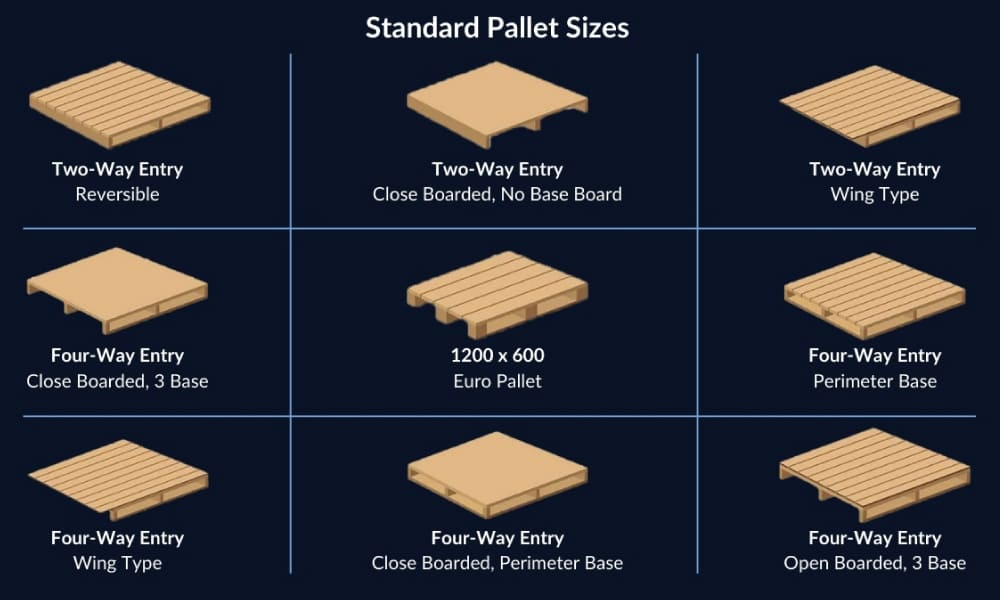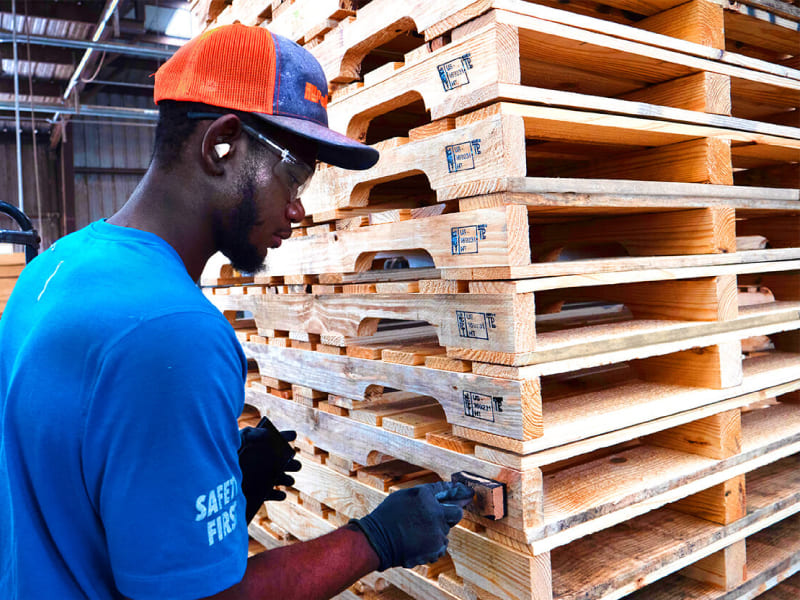In the intricate world of logistics and warehousing, pallets serve as the unsung heroes of material handling. These pallets form the backbone of industrial storage and transportation systems, playing an indispensable role in material movement and handling.
This guide delves into the diverse types of pallets, their unique features, and optimal applications to enhance your warehouse productivity.
Exploring the Pallets
Pallets, at their core, are flat structures designed to support goods during storage and transportation. They facilitate the efficient movement of products through supply chains, acting as a standardized unit for forklifts and other material handling equipment.
The strategic selection and utilization of pallets can significantly impact a warehouse's operational efficiency, overall logistics costs.

Dimensional Diversity: Pallet Classifications by Size
The dimensions of pallets is a basic factor in determining their compatibility with various storage systems and transportation modes. Let's explore the most prevalent pallet sizes in the global market:
-
- Dominate European logistics
- Regulated by the European Pallet Association (EPAL)
- Designed for optimal use of truck and container space
- Support loads up to 1,500 kg in transit
-
American Pallets (1000 x 1200 mm):
- Widely used in North America and Japan
- Also known as universal pallets or isopallets
- Offer greater surface area for larger loads
- Typically support static loads up to 6,000 kg
-
Other Standardized Sizes:
- ISO-approved dimensions include 1016 x 1219 mm, 1165 x 1165 mm, and more
- Less common but cater to specific industry needs or regional preferences
Accessibility Matters: Entry Point Configurations
The number of entry points on a pallet affects its maneuverability and compatibility with various handling equipment:
-
Four-way Entry Pallets:
- Allow forklift access from all sides
- Enhance flexibility in tight spaces
- Ideal for high-turnover warehouses
-
Two-way Entry Pallets:
- Limit access to two opposite sides
- Often more cost-effective to produce
- Suitable for operations with consistent handling patterns
Material Matters: Pallet Composition and Performance
The choice of pallet material significantly impacts durability, cost for bulk product storage:
-
Wooden Pallets:
- Market share of 90-95%
- Cost-effective and easily repaired
- Subject to ISPM 15 regulations for international shipping
- Challenges in cleaning and potential for pest infestation
-
Plastic Pallets:
- Gaining popularity due to hygiene advantages
- Lightweight and resistant to moisture
- Higher initial cost offset by longer lifespan
- 100% recyclable, supporting sustainability initiatives
-
Metal Pallets:
- Unparalleled strength and durability
- Ideal for heavy-duty applications in metalworking industries
- Fire-resistant and suitable for extreme environments
- Higher weight increases transportation costs
-
Cardboard Pallets:
- Disposable option for light loads
- Eco-friendly and easily recyclable
- Cost-effective for one-way shipments
- Limited durability restricts reusability

Specialized Solutions: Innovative Pallet Designs
To address specific industry needs, several specialized pallet designs have emerged:
- Reversible Pallets: Feature identical top and bottom decks, allowing double-sided use
- Closed Pallets: Incorporate a solid deck on one side, enhancing load stability
- Wing Pallets: Include extended edges to secure loads and improve stacking
Pallet Loading: Best Practices for Optimal Performance
Proper loading techniques are essential to maximize pallet efficiency and ensure cargo safety:
- Distribute weight evenly across the pallet surface
- Avoid overhanging loads that may compromise stability
- Utilize appropriate wrapping or strapping methods for load security
- Consider the intended handling equipment when arranging goods
Tailoring Pallet Selection to Industry Requirements
Different sectors have unique pallet needs based on their products and supply chain characteristics:
- Food and Beverage: Prioritize hygiene with plastic or treated wooden pallets
- Pharmaceutical: Opt for easily sanitized materials like plastic or metal
- Automotive: Choose heavy-duty pallets capable of supporting substantial loads
- Electronics: Select antistatic pallets to protect sensitive components
The Future of Pallets: Emerging Trends and Innovations
As logistics evolves, so too do pallet technologies:
- Smart pallets with embedded RFID tags for real-time tracking
- Sustainable materials and designs to reduce environmental impact
- Automated pallet management systems for enhanced warehouse efficiency
Final Thoughts
Pallets may seem like simple components in the grand scheme of logistics, but their impact on operational efficiency is profound.
Selecting the right pallet for your specific needs involves careful consideration of factors such as load requirements, handling equipment, storage conditions, and regulatory compliance.
Remember, the humble pallet is not just a platform for your products – it's a foundation for logistics excellence.


 Network Supported
Network Supported